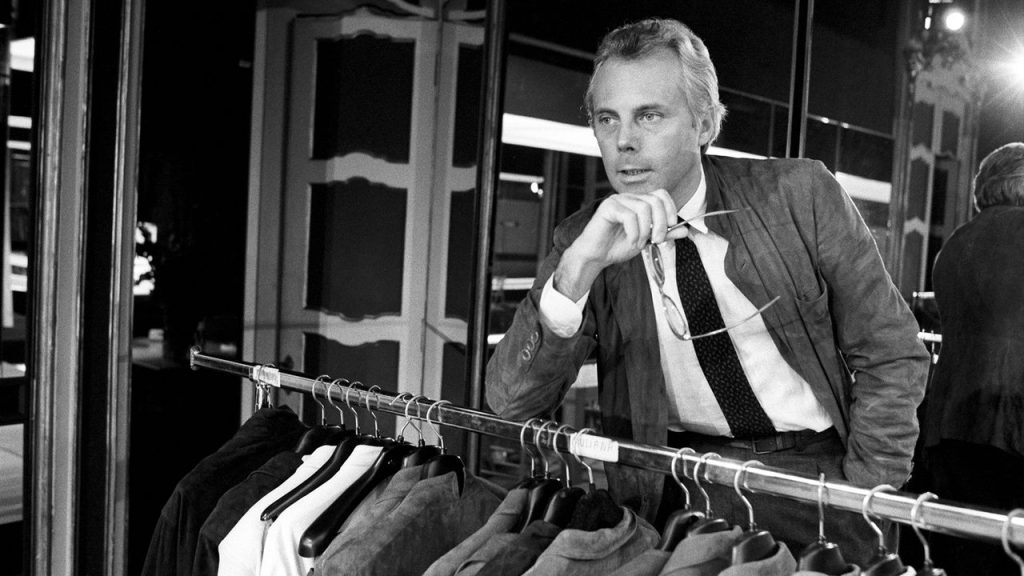Photo: David Lees/Getty Images.
Sartorially, the look that fueled Armani’s fame was one of relaxed, unstructured tailoring, specifically the jacket. Shortly after establishing his own label in the mid-1970s, he showed a men’s collection featuring a rumpled, unlined jacket that grazed and flattered the body and was a revelation in contrast to the stiff, constructed traditional suits that ruled common menswear. A few months later he reinvented women’s tailoring with a unique masculine allure by eliminating internal supports and padding. “I hope, sincerely, I do hope that [my jackets] have given them a relaxed feeling of security,” he once told an Italian magazine, according to a Vanity Fair profile from 2000, “and the salutary feeling of being unattackable.” In the 1980s the Armani “power suit” for men and women, with its exaggerated shoulders, widened lapels inspired by the 1940s, and monochromatic silhouette, became the radical signifier of a time of economic prosperity.
As influential and era-defining as Armani’s sensual suiting was his relationship with Hollywood. The dynamic of power and sexuality that Armani’s clothes represented was immortalized onscreen in Paul Schrader’s 1980 film American Gigolo, which features a shirtless Gere shimmying in front of a closet full of Armani suits, painstakingly selecting the perfect jacket, shirt, and tie in which to get down to business. But it was offscreen that Armani set a new standard, virtually inventing the modern epoch of red-carpet dressing and the fashion-celebrity industrial complex.
In 1988, Armani opened an LA office, hiring former journalist Wanda McDaniel, whose husband was Hollywood producer Albert Ruddy, known for The Godfather, as a liaison to the stars and everyone in their professional orbit—lawyers, managers, agents, producers, and directors. According to a 1995 story in The New York Times, it was McDaniel’s job to invite celebrities to Armani fashion shows and make sure flights, hotels, and of course, clothes, were paid for. “Since Ms. McDaniel’s arrival, Armani has been available at deep discounts to those who can further the designer’s cause in Hollywood, be they agents or celebrities,” reads the Times story. “Mr. Armani would like to dress you,” was reportedly how the overture was made.
His fascination with cinema dated back to childhood, and Armani began dressing actors long before the opening of the LA office or his store on Rodeo Drive. Diane Keaton was the first person to wear Armani on the red carpet, donning a beige jacket over a long skirt when she won the Academy Award for best actress for Annie Hall in 1978. In 1990, Julia Roberts wore an Armani suit to the Golden Globes. Jodie Foster collected her best-actress Oscar for The Silence of the Lambs in 1992 in an oyster Armani suit. Armani cemented long-standing relationships with Leonardo DiCaprio, Lady Gaga, George Clooney, and Cate Blanchett.
Over the entirety of his career, Armani was famously unflinching in his commitment to his core aesthetic, even when the tides of trends and taste ebbed from his current. His atelier and circle of influence was tight, loyal, and highly guarded, including Leo Dell’Orco, head of menswear design, and his niece Silvana Armani, head of womenswear. Rather than enlisting an outside stylist from fashion’s preferred roster of star image-makers for his runway shows and campaigns, Armani did it all himself, for better or worse. In the aughts and 2010s, critics complained that his collections were frozen in another time, with their predilection for funny hats and tricky pants.


